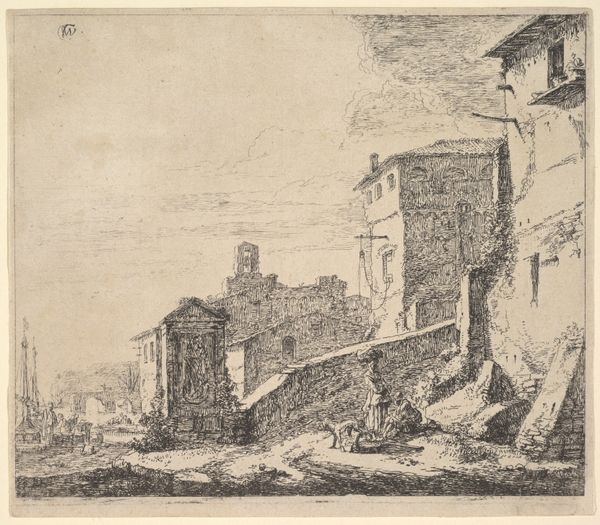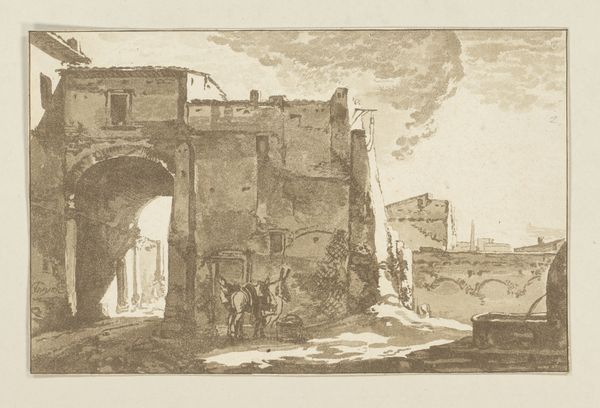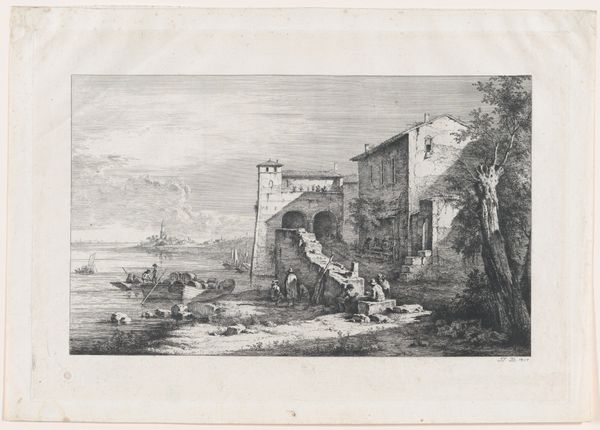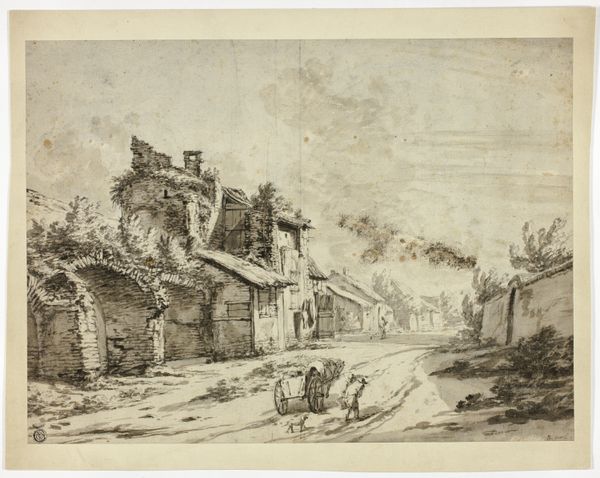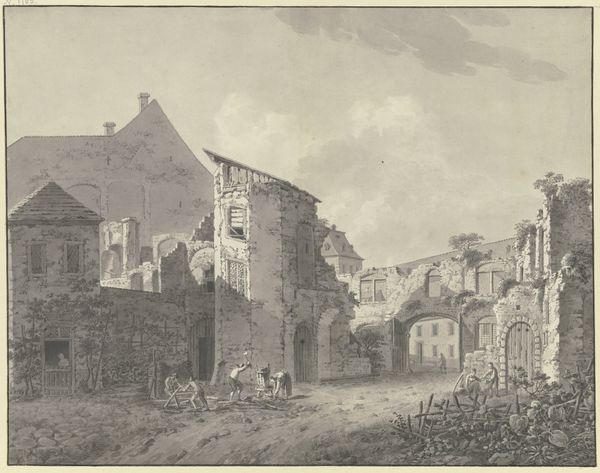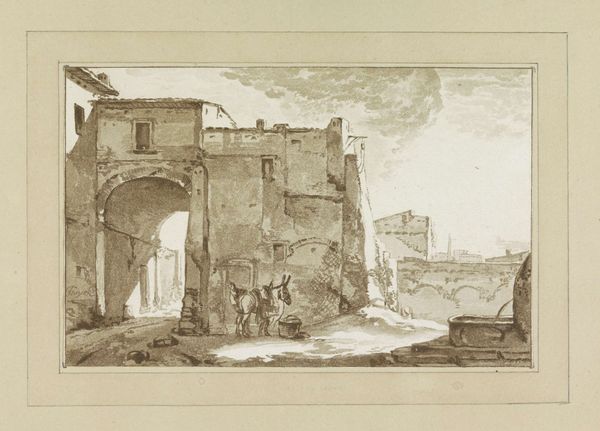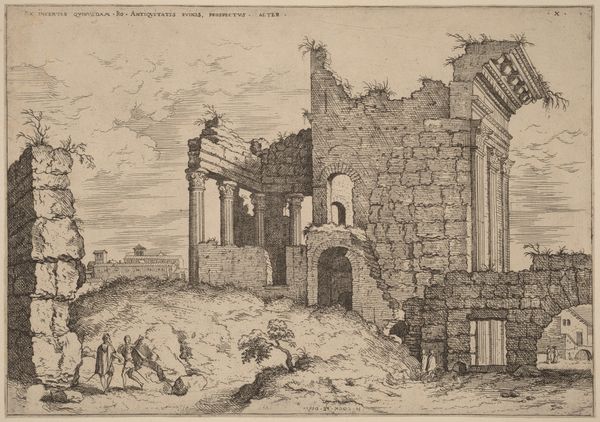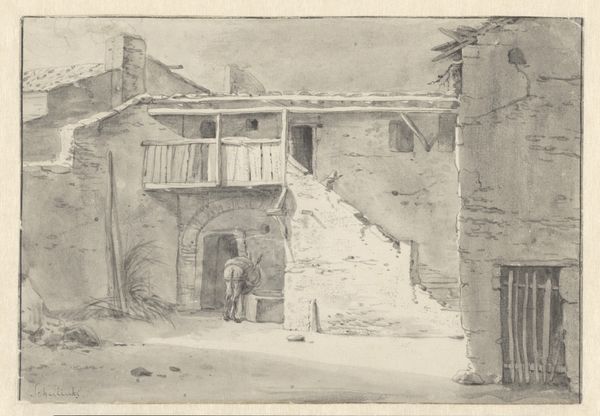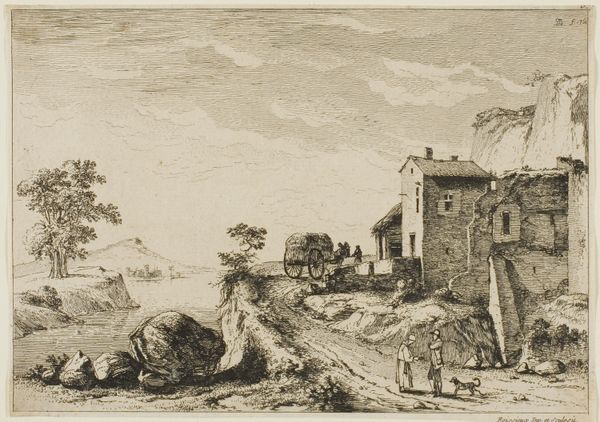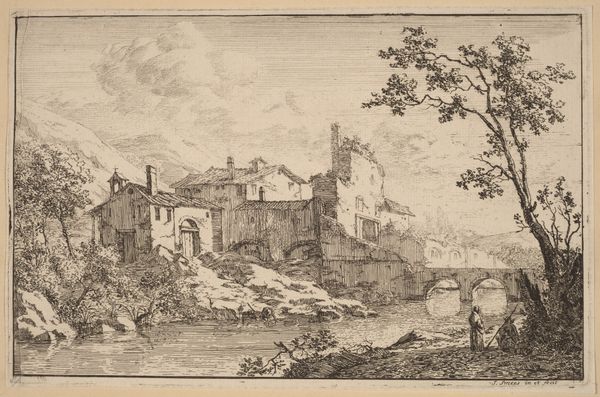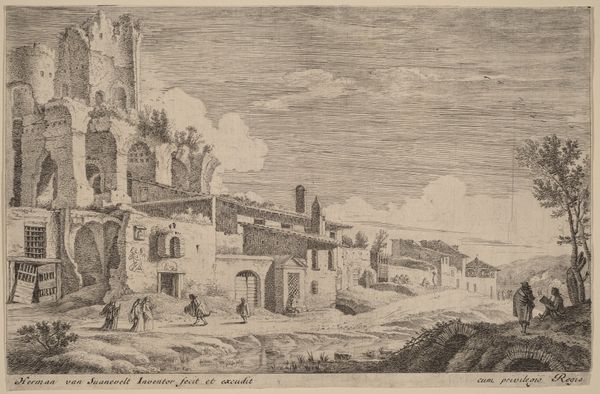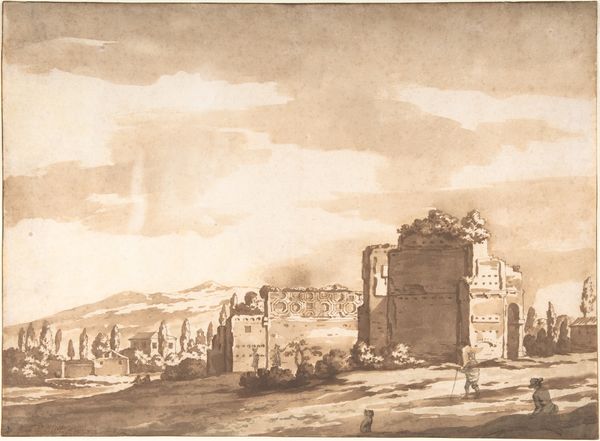
Village Scene with Woman Standing Beside a Seated Man (copy) 1610 - 1677
0:00
0:00
drawing, print, etching, architecture
#
drawing
# print
#
etching
#
dog
#
landscape
#
men
#
genre-painting
#
architecture
Dimensions: 14.9 x 18.0 cm
Copyright: Public Domain
Curator: This is “Village Scene with Woman Standing Beside a Seated Man (copy),” an etching by Thomas Wijck, dating from 1610 to 1677. The artwork now resides here at The Met. Editor: It has such a melancholic mood, wouldn't you agree? The light is almost entirely leached from the scene, leaving stark lines and rough textures that convey a sense of poverty and ruin. Curator: Interesting. I’m drawn to consider Wijck's workshop and the etcher's process here. Printmaking was an incredibly efficient mode of disseminating images, and it democratized art viewing significantly in the early modern period. Did Wijck intend this copy to circulate among a broader audience? Who were the intended viewers, and how might its themes resonated with their lives? Editor: The composition creates a very powerful effect: the crumbling buildings dominate the right, leading the eye into a middle ground with a very pronounced tower, all under an incredibly bleak sky. Notice the textures created simply through lines! Curator: Consider, too, the lives depicted: that woman, standing by the seated man—presumably a peasant. Are we, the viewers, meant to consider them subjects of sympathy, perhaps? How might socio-economic inequalities have figured into the experience and meaning-making processes of 17th-century Europeans? The medium of etching enabled distribution to those who also experienced economic anxieties, while perhaps titillating more privileged collectors, who sought artistic copies after grander painted scenes they’d encountered on the Grand Tour? Editor: It’s visually captivating how such fine, simple lines can depict a wealth of crumbling architecture and weary figures with such somber affect. It's incredible, really! Curator: Indeed, and by interrogating the conditions of its creation and distribution, we can move towards more equitable engagements with the social, economic, and even political dynamics reflected in this print. It compels us to remember that this piece would have been accessed and appreciated through diverse social circumstances and experiences, not unlike our own contemporary world. Editor: Right, right, a powerful testament to how line and form can communicate even in the most minimalist visual conditions.
Comments
No comments
Be the first to comment and join the conversation on the ultimate creative platform.
